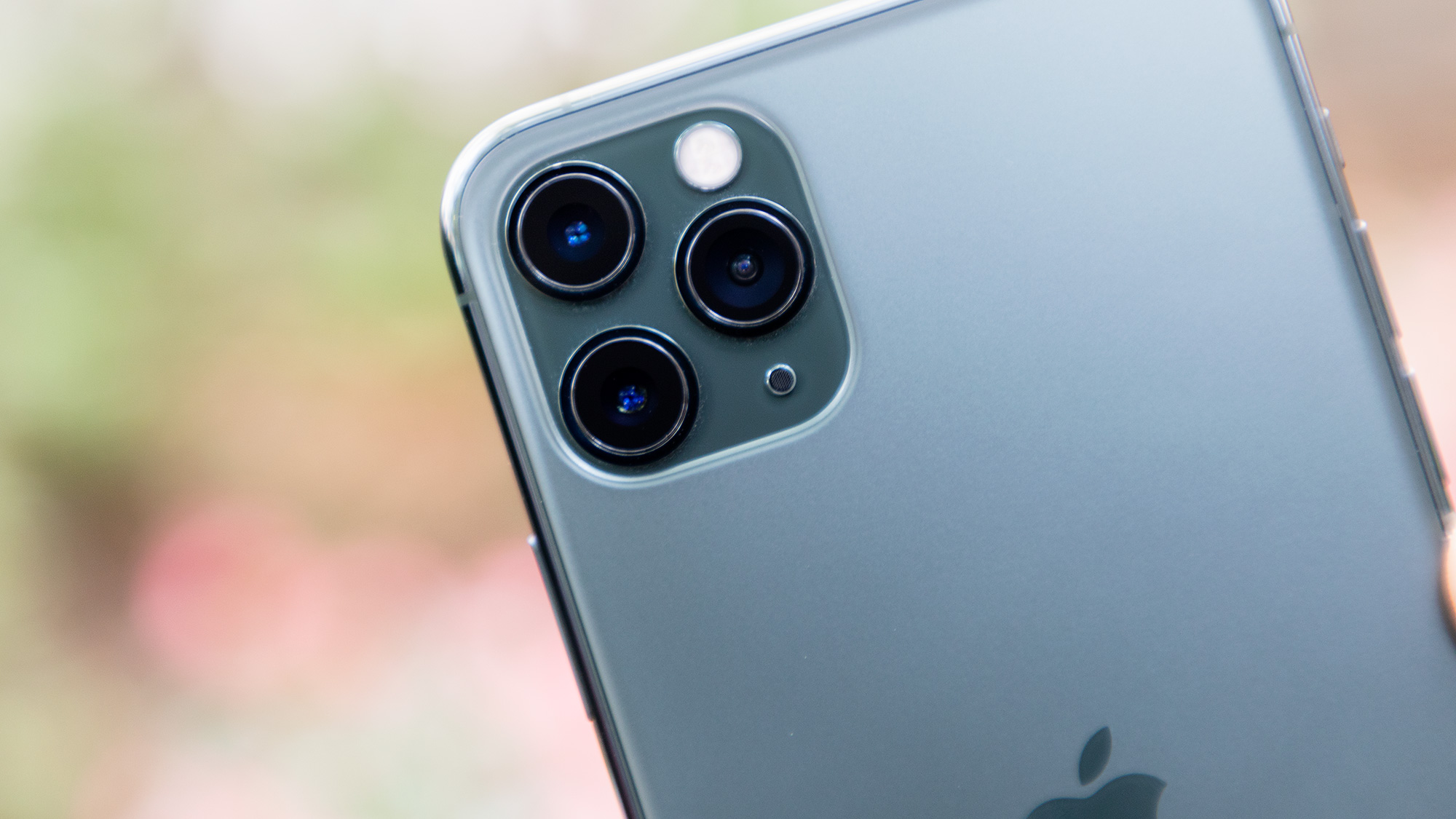Tom's Guide Verdict
Captivating triple cameras, the longest iPhone battery life ever and an even brighter display make the iPhone 11 Pro Max the ultimate power user's smartphone.
Pros
- +
Gorgeous OLED display is now brighter
- +
A13 Bionic CPU fastest around
- +
Stellar triple cameras with Night mode
- +
Longest battery life of any iPhone
- +
Durable design
- +
Fast charging in box
Cons
- -
Skimpy 64GB storage
- -
Fewer color options than iPhone 11
Why you can trust Tom's Guide
The iPhone 11 Pro Max isn't just the best phone around, it's the phone I'd buy with my own money.
Yes, the regular $699 iPhone 11 is a fantastic value, but the iPhone 11 Pro Max ($1,099) has a more dynamic OLED display compared with the iPhone 11's LCD. I also like having the third lens on the iPhone 11 Pro Max for telephoto zoom, which the iPhone 11 lacks. And as much as I like the smaller iPhone 11 Pro — which shares all the key features with the Max — I prefer the iPhone 11 Pro Max for its bigger screen and longer battery life.
Apple should have included more storage to start, and I'm getting tired of that notch. But as you'll see in this in-depth iPhone 11 Pro Max review, it's the best iPhone for now.
Editor's note: Apple has discontinued the iPhone 11 Pro Max (and its successor, the iPhone 12 Pro Max). The company's latest big-screen device is the iPhone 13 Pro Max, which has even better cameras and a 6.7-inch, 120Hz display, and is our new top pick among the best phones. Read our full iPhone 13 Pro Max review.
iPhone 11 Pro Max review: cheat sheet
- The triple cameras on the iPhone 11 Pro Max give Apple the best camera phone, thanks to its great Night mode and improved Smart HDR.
- If you want the longest iPhone battery life, the iPhone 11 Pro Max is the one to get, as it lasted nearly 12 hours on our web surfing test.
- The cameras also shoot gorgeous-looking 4K video with extended dynamic range and cinematic video stabilization.
- Apple's slow-motion selfies are fun at 120 fps, even though the slofie name is dumb.
- Apple finally included a fast charger in the box, so you can get to 50 percent in 30 minutes.
- We wish Apple included more than 64GB of storage, so you may want to pay for more if you shoot a lot of video.
iPhone 11 Pro Max price and availability
The iPhone 11 Pro Max is now available and went on sale Sept. 20. The phone starts at a fairly steep $1,099 ($45.79 per month) but can be had for as little as $499 ($20.79) if you trade in an iPhone XS Max. (Older iPhones fetch a smaller trade-in value from Apple.)
The iPhone 11 Pro Max comes with 64GB of storage. A 256GB model sells for $1,249 and the 512GB version costs $1,449. It's worth noting that the Galaxy Note 10 and Note 10 Plus come with 256GB standard, which is quadruple the storage.
If you’re buying the iPhone 11 Pro Max in the UK, prices start at £1,149 for 64GB of storage, then £1,299 for 128GB and £1,499 for 256GB. Apple is running a trade-in offer if you’re willing to give them your current phone in part-exchange, meaning that you can get the iPhone 11 Pro Max for as low as £859 depending on your existing phone's value.
Be sure to check out our iPhone 11 deals page for the latest discounts and our Apple Store coupons page.
iPhone 11 Pro Max specs
| Row 0 - Cell 0 | iPhone 11 Pro Max |
| Starting Price | $1,099 |
| Screen (Resolution) | 6.5-inch Super Retina XDR Display (2688 x 1242) |
| CPU | A13 Bionic |
| RAM | Unknown |
| Storage | 64GB, 256GB, 512GB |
| MicroSD? | No |
| Rear Cameras | 12-MP wide (f/1.8), 12-MP ultra wide (f/2.4), 12-MP telephoto (f/2.0) |
| Front Cameras | 12-MP (f/2.2) |
| Water Resistance | Up to 4 meters for 30 minutes |
| Battery Size | Unknown |
| Battery Life (Hrs:Mins) | 11:54 |
| Size | 6.22 x 3.06 x 0.32 inches |
| Weight | 7.97 ounces |
| Colors | Gold, space gray, silver, midnight green |
iPhone 11 Pro Max design: Downright Intimidating
The iPhone 11 Pro Max has a look from the back that says "Come at me, Android." The three camera lenses are so large that I feel like something's about to launch out of them. I do like the matte glass finish on the back, which is downright refreshing compared with glossy, smudge-prone phablets like the Galaxy Note 10 and Huawei P30 Pro.
I could see why the iPhone 11 Pro Max might be jealous of the regular iPhone 11. It comes in four colors to the iPhone 11's six. And instead of fun hues like green, purple and yellow, Apple sticks with more conservative options for the iPhone 11 Pro Max that befit its pro-user status. These include the midnight-green color on our review unit (which frankly looks gray). The midnight green only really shines through on the stainless-steel band and in the rings around the cameras. Space gray (which is darker), silver and gold round out the options.
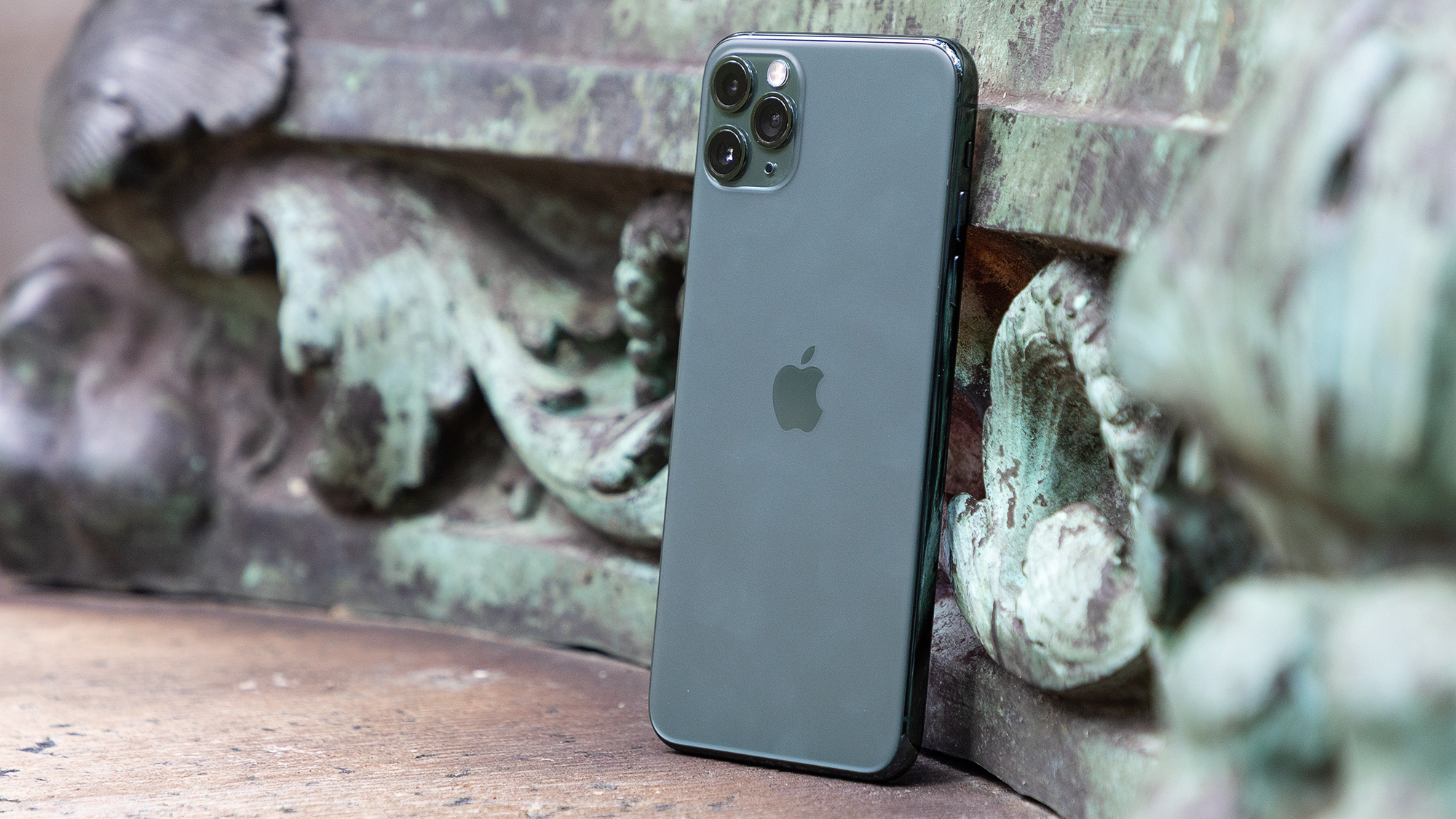
The iPhone 11 Pro Max looks the same from the front as the iPhone XS Max. The notch toward the top, which houses the Face ID TrueDepth camera, is still distracting but I've gotten used to it.
At 6.2 x 3.06 x 0.32 inches and 7.97 ounces, the iPhone 11 Pro Max continues to be a handful. It's heavier than the 7.34-ounce iPhone XS Max and also a bit thicker. The Galaxy Note 10 Plus, which has a larger 6.8-inch screen, is a full ounce lighter at 6.9 ounces and it's also slightly narrower and slimmer at 6.4 x 3 x 0.31 inches.
iPhone 11 Pro Max durability
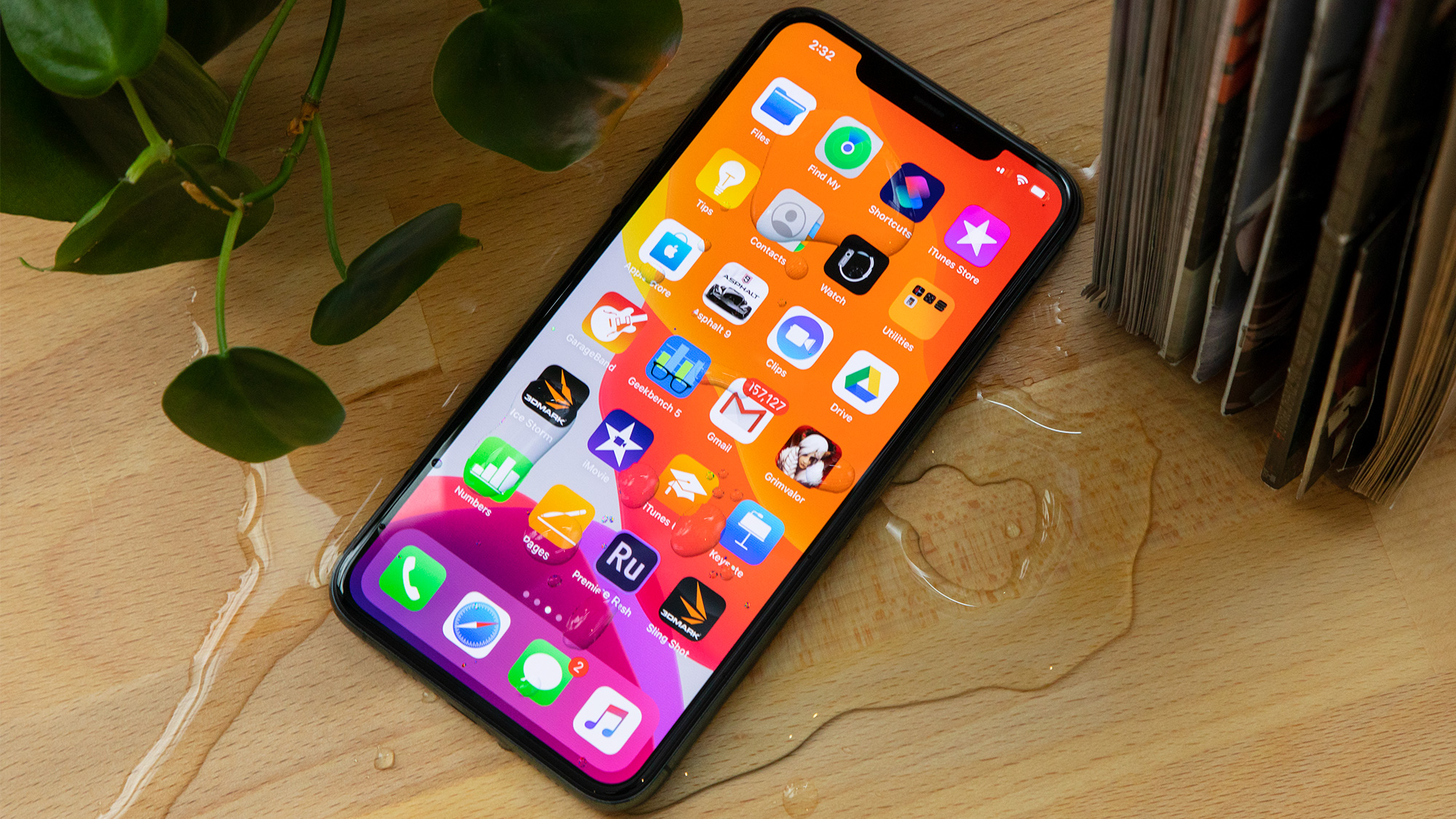
Speaking of intimidating, Apple says that the front and back of the iPhone 11 Pro Max have the toughest glass in a smartphone. However, the regular iPhone 11 cracked on the first drop in our drop test from 3.5 feet on a sidewalk. We would invest in a case if you're worried about breakage.
By the same token, some iPhone 11 Pro owners have complained that their screens have scratched easily. We have not encountered any issues with our review unit. But if you're concerned about your phone picking up scuffs or scratches we would invest in a screen protector.
Apple has improved the IP68 water resistance on the iPhone 11 Pro Max; the phone can withstand being submerged in 4 meters of water for 30 minutes (up from 2 meters on the iPhone XS Max). That makes it more durable than any other flagship phone against liquids, earning it the top spot in our list of the best waterproof phones.
iPhone 11 Pro Max display and audio: This is bright
If you're on the fence between the iPhone 11 Pro Max and iPhone 11, don't bring both phones outside. You'll notice the huge difference in brightness that I did. In fact, the iPhone 11 Pro Max's 6.5-inch Super Retina XDR display vastly outshined the Galaxy Note 10 Plus, too, when I put both phablets side by side.
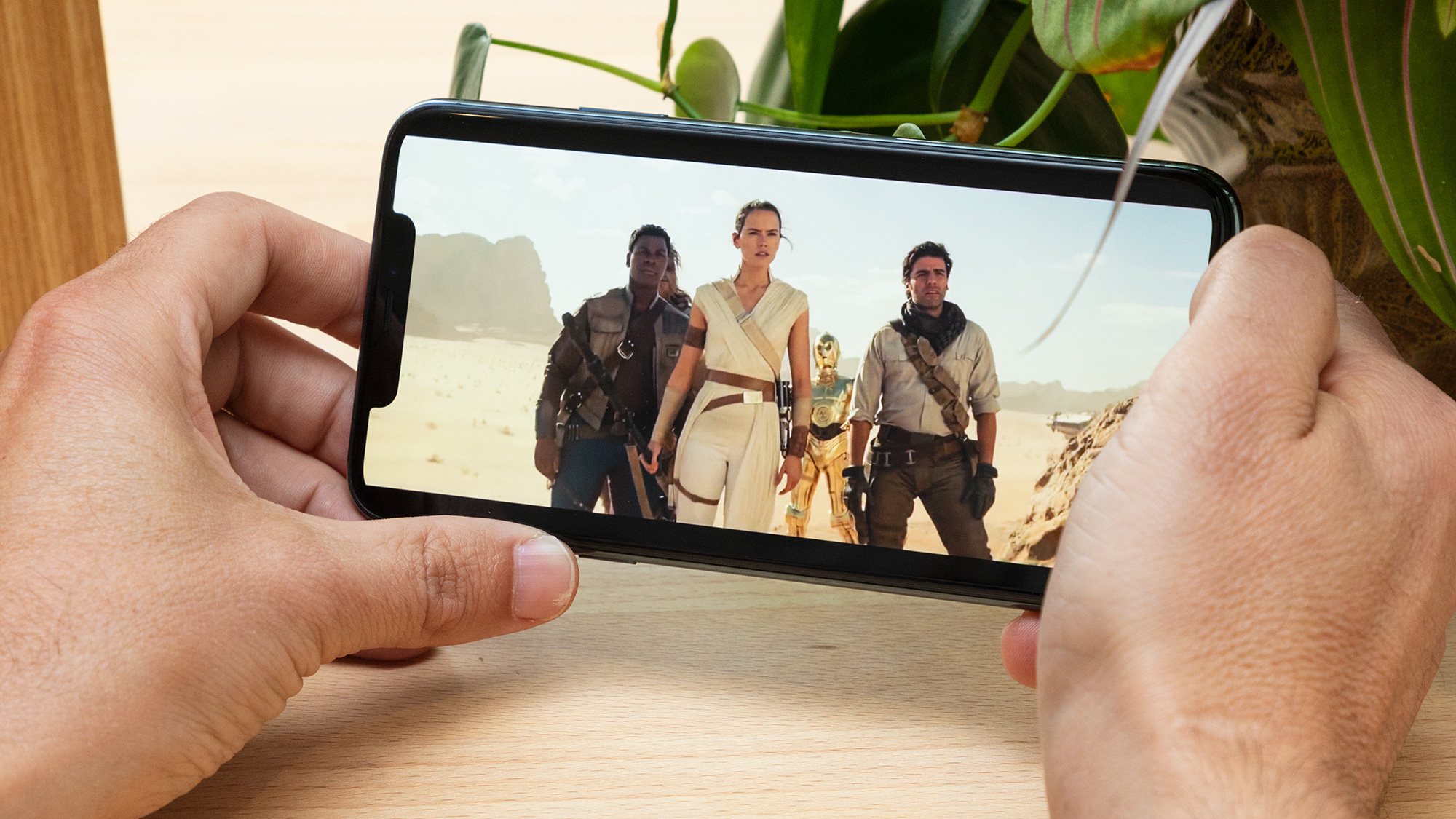
When watching the Star Wars Episode 9 Trailer: The Rise of Skywalker on both the iPhone 11 Pro Max and last year's iPhone XS Max, I could make out more gradations of color in Princess Leia's hair as she hugged Rey. This is likely thanks to the extended dynamic range offered by the improved panel on the iPhone 11 Pro Max.
Our lab results backed up my real-world impressions, as the iPhone 11 Pro Max turned in an average nit reading of 761 nits, compared with 652 nits for the iPhone 11 and 686 for the Galaxy Note 10 Plus.
The iPhone 11 Pro Max's panel isn't the most colorful, registering 118.6% of the sRGB color gamut, compared with 124.6% in the Note 10 Plus' Natural screen mode. The OnePlus 7 Pro hit 180%. Regarding color accuracy, the iPhone 11 Pro Max's display registered a Delta-E score of 0.28 (where 0 is perfect). That's stellar, but not quite as good as the Galaxy Note 10 Plus (0.25) and OnePlus 7 Pro (0.18).
The sound on the iPhone 11 Pro Max is just as bright as the visuals, as there's now spatial audio with Dolby Atmos support. When watching the trailer for Yesterday, Jack's cover of The Beatles famous track had more dimension to it through the iPhone 11 Pro Max compared with the iPhone XS Max. The guitar strings and vocals were much more present, while they sounded flatter on last year's phone.
iPhone 11 Pro Max cameras: A true triple threat
Although Apple has taken a back seat to Android camera phones over the past couple of years, Apple has regained its footing — and then some— with the iPhone 11 Pro Max. The new phone offers three stellar 12-MP rear cameras: a wide-angle, a 2x telephoto with wider aperture that lets in more light than before and an ultra-wide camera with a 120-degree field of view.
Check out the many photo comparisons below, as well as our iPhone 11 Pro vs Pixel 4 camera face-off to see how the two phones compare in various situations.
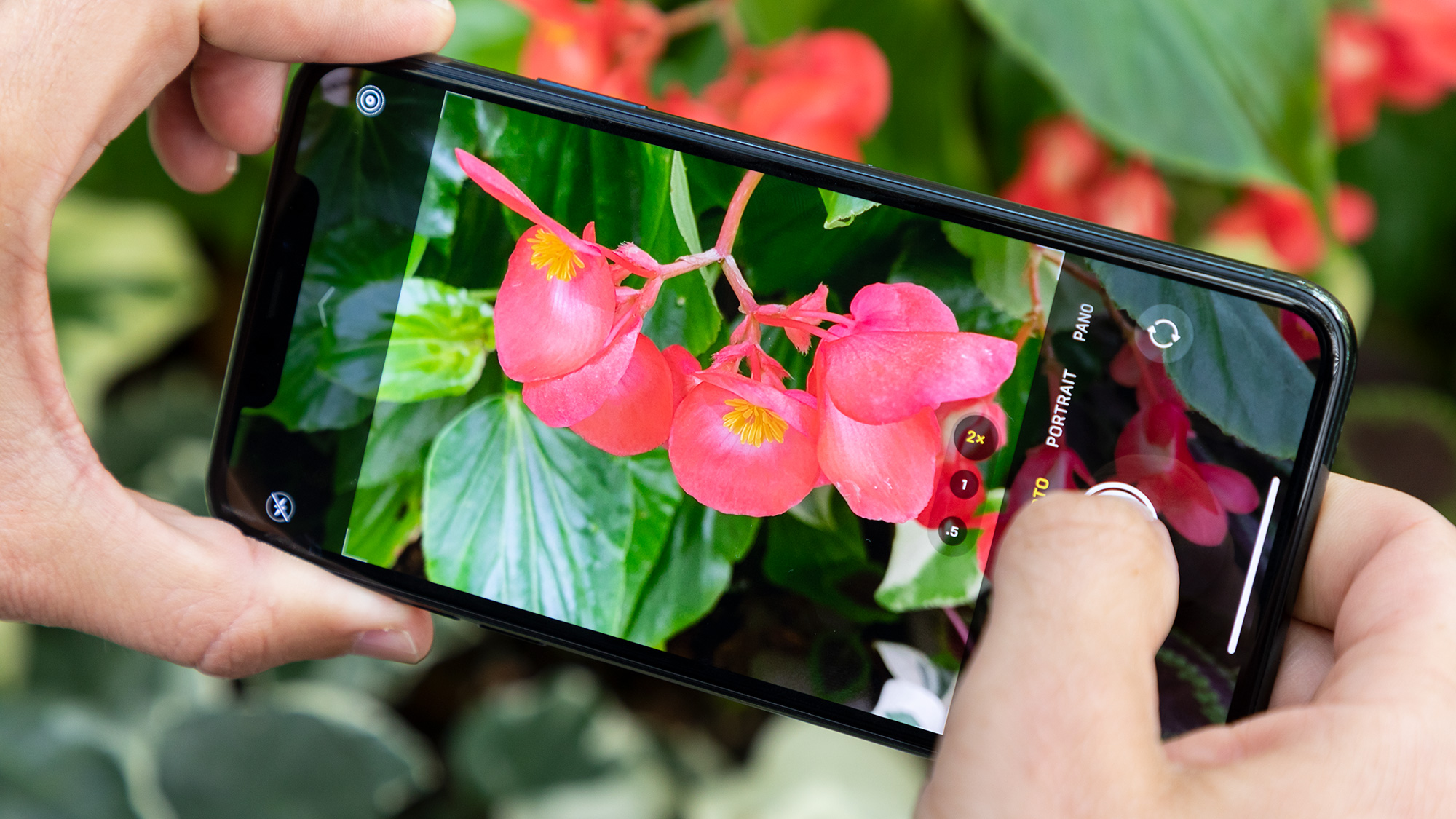
While you're shooting with the standard-wide camera, the iPhone 11 Pro Max's camera interface shows you a live preview outside the frame of what you could fit into your shot if you engaged ultra-wide mode. It's a nice touch and I found myself switching to that mode several times during my testing to get a more dramatic shot.
We put the iPhone 11 Pro Max up against the Samsung Galaxy Note 10 Plus' ultra-wide camera in this photograph in Bryant Park, and Apple's camera delivers a warmer pic and more natural hues. However, you'll see sharper details in the Note 10 Plus' photo.
The other big new feature for the iPhone 11 Pro Max's camera is Night Mode, which kicks in automatically when the iPhone detects more than 10 lux of available light. In this comparison with the Note 10 Plus, Apple soundly beats Samsung's effort. The Note 10 Plus' shot is entirely too grainy, while the wood and decorations look more realistic on the iPhone 11 Pro Max.
We took another photo in low light with lots of people in the frame with the iPhone 11 Pro (which has the same camera as the Pro Max) and the Pixel 3, and it was a much closer contest. The Pixel 3 captured a brighter scene overall, but I prefer the way it handles the lights in the trees, and the wood in the table and surrounding fence looks more natural. It's a night shot that looks more like night, while the Pixel 3 washes some things out, like the man's shirt in the middle of the frame, as well as his beer.
The iPhone 11 Pro Max's camera also boasts a new Smart HDR feature that leverages machine learning to recognize people and ensure that details and highlights and faces look their best.
In this portrait of my colleague Shaun, the Note 10 Plus pretty much ruins the shot with its washed-out face, while the iPhone 11 Pro Max's camera delivers a warmer skin tone and better detail around the subject's cheeks. The skin is a bit too smooth on the Note 10 Plus, although Samsung's camera offers more detail in Shaun's hair and in his tattoos.
I didn't include many comparisons with Google's Pixel 3 because the Pixel 4 is on the way, but I thought this statue photo provided an interesting contrast between Apple's and Google's approach to photography. The Pixel 3's image is detailed but on the dark side, while the iPhone 11 Pro Max's brighter pic does a better job rendering the stone, giving you a better sense of texture.
With this indoor shot taken at an Oyster Bar with a moderate amount of light, I give the edge to the Galaxy Note 10 Plus. The lights lining the walls look more distinct and as you zoom in the lettering on the menus appears sharper. Plus, all the different neutral shades in the tiles look better in Samsung's photo than on the iPhone 11 Pro Max, which look more gray.
Finally, I pitted the iPhone 11 Pro Max against the Galaxy Note 10 Plus in this photo of a cookie, and it's not even close. From the darker brown of the cookie to the more colorful M&M's on top, Apple's camera simply took a more delicious shot.
The iPhone 11 Pro's camera gets even better with Apple's Deep Fusion feature. Debuting in iOS 13.2, Deep Fusion performs pixel-by-pixel photo processing to deliver even more detail and better textures along with less noise. As with Night Mode, you don't have to enter a separate mode to reap the benefits of this feature.
We put Deep Fusion through its paces in a series of photos with the iPhone 11 Pro (with Deep Fusion) and iPhone 11 Pro Max (without), and you can see that there are some tangible benefits. For example, you can make our more stubble in my colleague Rami's face, as well as more detail on the inside of his hoodie.
iPhone 11 Pro Max video: A step above
Apple has focused on improving its video recording with the iPhone 11 Pro Max, and it shows. There's now extended dynamic range for better highlight details along with cinematic stabilization for smoother footage.
To put the iPhone 11 Pro Max to the test, I put it up against the Note 10 Pro as I walked through the park. At first, the Note 10 Pro's cameras seem better with more vibrant greens in the grass, but once you look closer, you'll see that the iPhone 11 Pro Max offers better detail. Plus, the iPhone had fewer problems with lens flare.
With iOS 13, it's now easier to start shooting videos on the fly, with the phone's QuickTake video feature. You just press and hold the shutter button, and if you want to keep shooting you slide your finger to the right.
iPhone 11 Pro Max front camera: Wider selfies and slofies
The front camera on the iPhone 11 Pro Max gets several upgrades from the iPhone XS Max, including a sharper sensor (12MP vs. 7MP) and a wider view to fit more subjects (or just more of the scene) into your shots. A clever software trick automatically engages the wide view when you flip the phone to landscape mode.

To add some levity to video selfies, the iPhone 11 Pro Max lets you record slow-motion videos with the front camera at up to 120fps — a feature Apple calls "slofies."
I gave it a shot by recording myself in front of a trickling fountain, and the background effect is mesmerizing. So despite the groan-inducing name, this feature could prove viral as people get creative with it.
iPhone 11 Pro Max performance: A13 Bionic is world's fastest (again)
This is going to sound like a broken record, but Apple has the world's fastest phone once more, thanks to its powerful A13 Bionic processor. This chip packs a CPU and GPU that are both 20% faster than last year’s A12, along with a neural engine for machine learning that's also 20% faster.
I noticed this speed difference when opening apps like Asphalt 9. The iPhone 11 Pro Max took a little less than 4 seconds, compared with 8 seconds for the Galaxy Note 10 Plus. Mortal Kobat also loaded a couple of seconds faster on the iPhone 11 Pro Max.
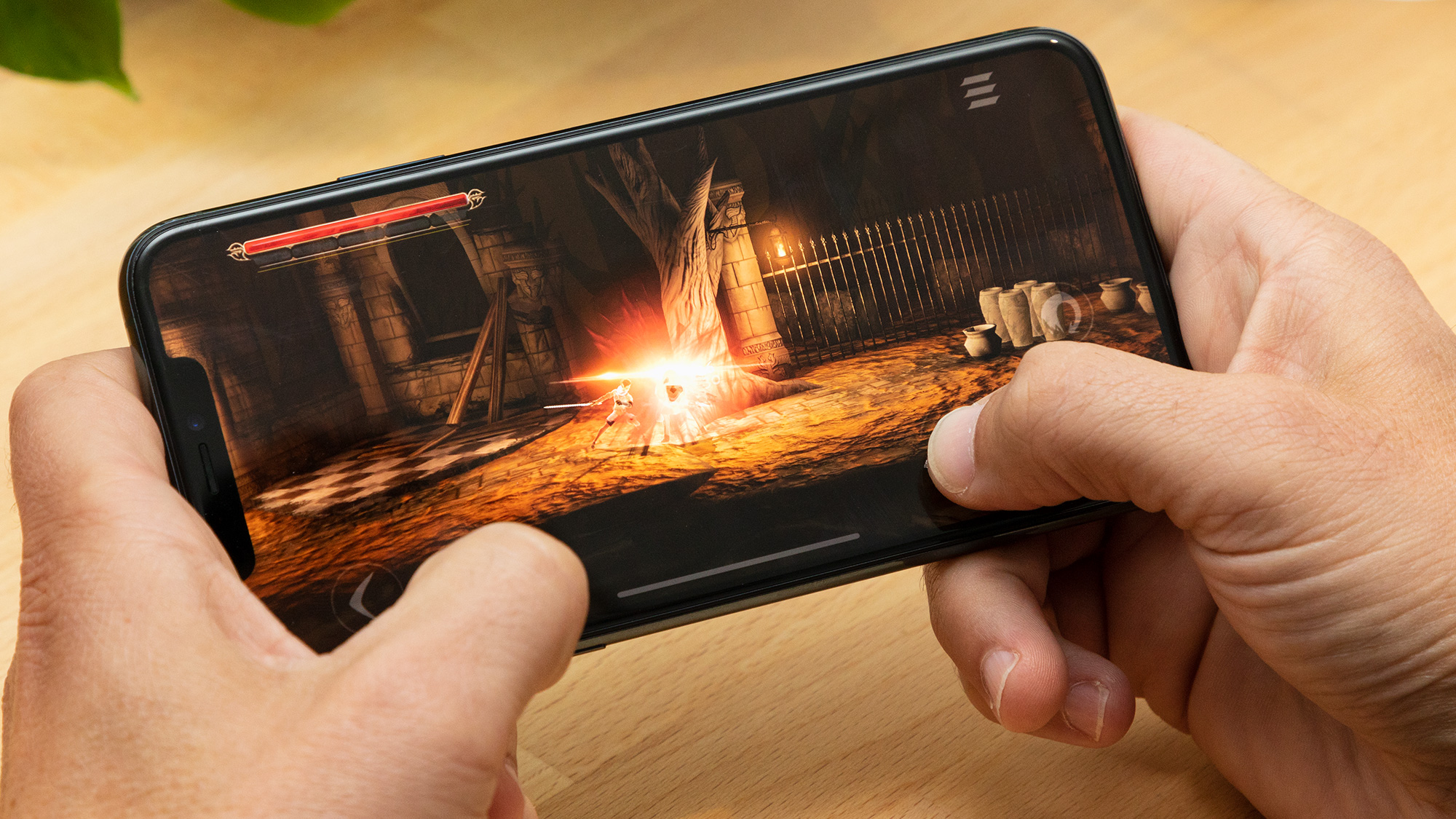
On Geekbench 5, a relatively new benchmark that measures overall performance, the iPhone 11 Pro Max notched a single-core mark of 1,334 and a multicore score of 3,517, The Galaxy Note 10 Plus scored 736 and 2,691 respectively, while the OnePlus 7 Pro was also behind with 744 and 2,802. Last year's iPhone XS Max scored 1,106 and 2,773.
To test graphics performance we ran GFXBench, and once again the iPhone 11 Pro Max lapped Android phones. On the Aztech Ruins High Tier off-screen test, the iPhone 11Pro Max hit 1657 frames (25 fps), compared with 1,058 frames (16 fps) for the Galaxy Note 10.
The iPhone 11 Pro Max didn't perform as well on 3DMark, another graphics benchmark. On the Slingshot Extreme Unlimited portion of the test, Apple's phone notched 5,974, while the Galaxy Note 10 Plus and OnePlus 7 Pro both cleared 6,200.
We gauge real-world performance across iOS and Android phones using our own video- editing test. We time how long it takes to transcode a 4K video to 1080p in the Adobe Rush app after applying an effect and transition. The iPhone 11 Pro Max took just 45 seconds to complete this task versus 1:34 for the Note 10 Plus. On this test, however, last year's iPhone XS Max was just as speedy.
iPhone 11 Pro Max battery life and charging: The longest-lasting iPhone
Apple has answered one of the few complaints I had about the iPhone XS Max by giving the iPhone 11 Pro Max more juice. Thanks to a more efficient A13 chip and display, as well as a bigger battery, this new phone lasts more than an hour longer on our battery test, which involves continuous web surfing over 4G LTE at 150 nits of screen brightness.
While the iPhone XS Max lasted a pretty good 10 hours and 38 minutes on our test, the iPhone 11 Pro Max's battery lasted an average of 11 hours and 54 minutes, which lands the 11 Pro Max on our list of phones with the best battery life.
To put this runtime in perspective, the Galaxy Note 10 Plus lasted an average of 11 hours and 9 minutes, while the OnePlus 7 Pro was more than 2 hours behind with 9:31.
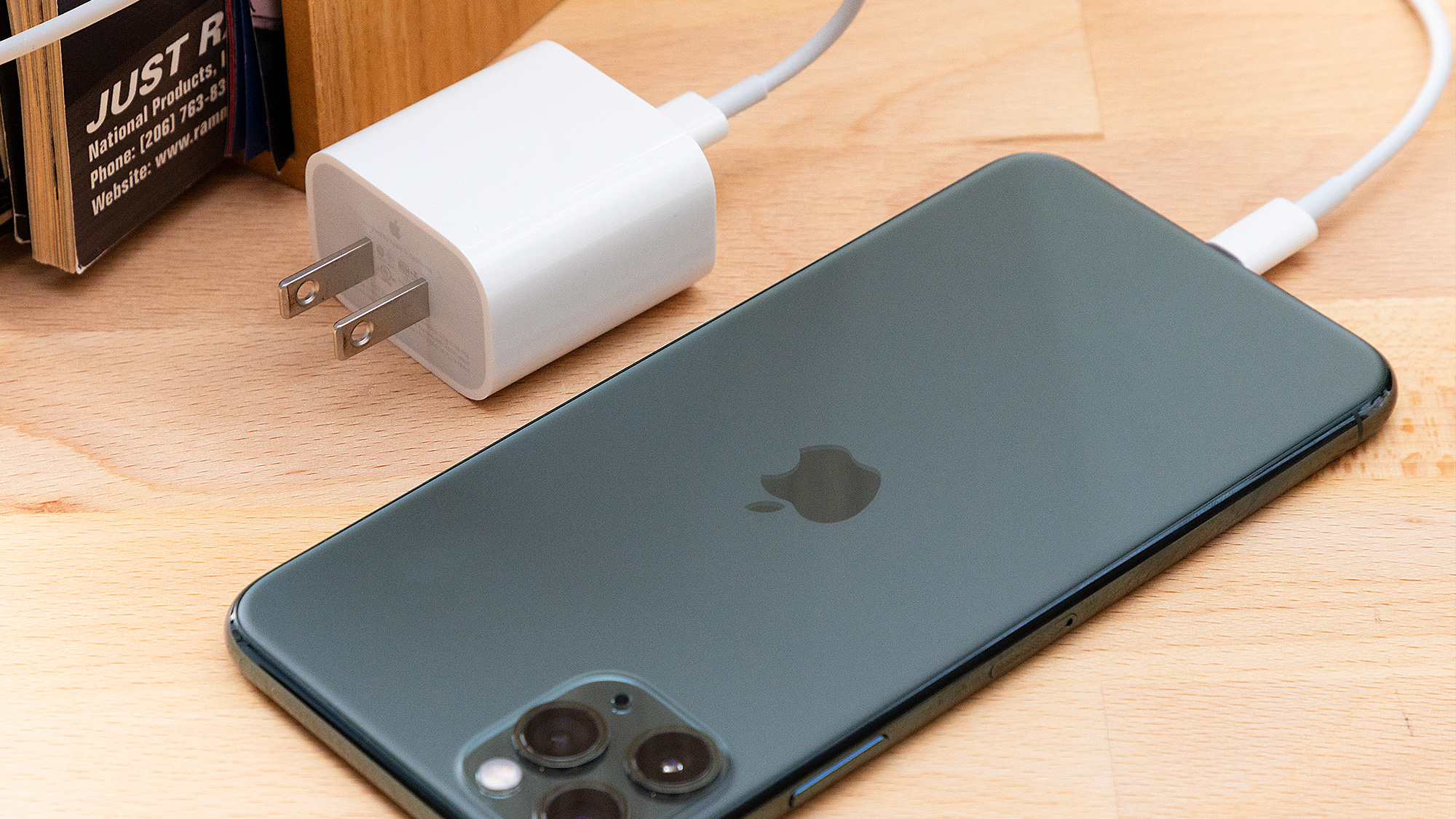
It's worth noting that the smaller iPhone 11 Pro lasted only 10 hours and 5 minutes on our battery test, so if you really care about endurance you should go for the iPhone 11 Pro Max.
When it comes to charging, the good news is that Apple finally includes a fast charger in the box. The bad news is that this somewhat bulky 18-watt adapter isn't as speedy as the top Android phones. After 30 minutes of charging, the iPhone 11 Pro Max reached 48% in 30 minutes. (The regular iPhone 11 Pro got to 55% in 30 minutes, but it also has a smaller battery).
That's great, but the Galaxy Note 10 Plus got to 65% in the same amount of time with its 25-watt charger and the OnePlus 7 Pro hit 60 with its 40W charger.
iPhone 11 Pro Max wireless: No 5G but there's Wi-Fi 6 and U1 chip
The iPhone 11 Pro Max gives you a lot of phone for the money, but it's not future-proof, and that's because it doesn't support 5G networks. Although we've seen spotty 5G performance in our early tests, 5G phones like the Galaxy S10 5G and Galaxy Note 10 Plus 5G can exceed 1Gbps download speeds.
The problem is that 5G networks are still a year away from rolling out nationwide nationwide, and that the modems needed to support multiple 5G bands were not available to Apple in time for this launch; the next iPhone in 2020 should have a versatile 5G modem from Qualcomm.
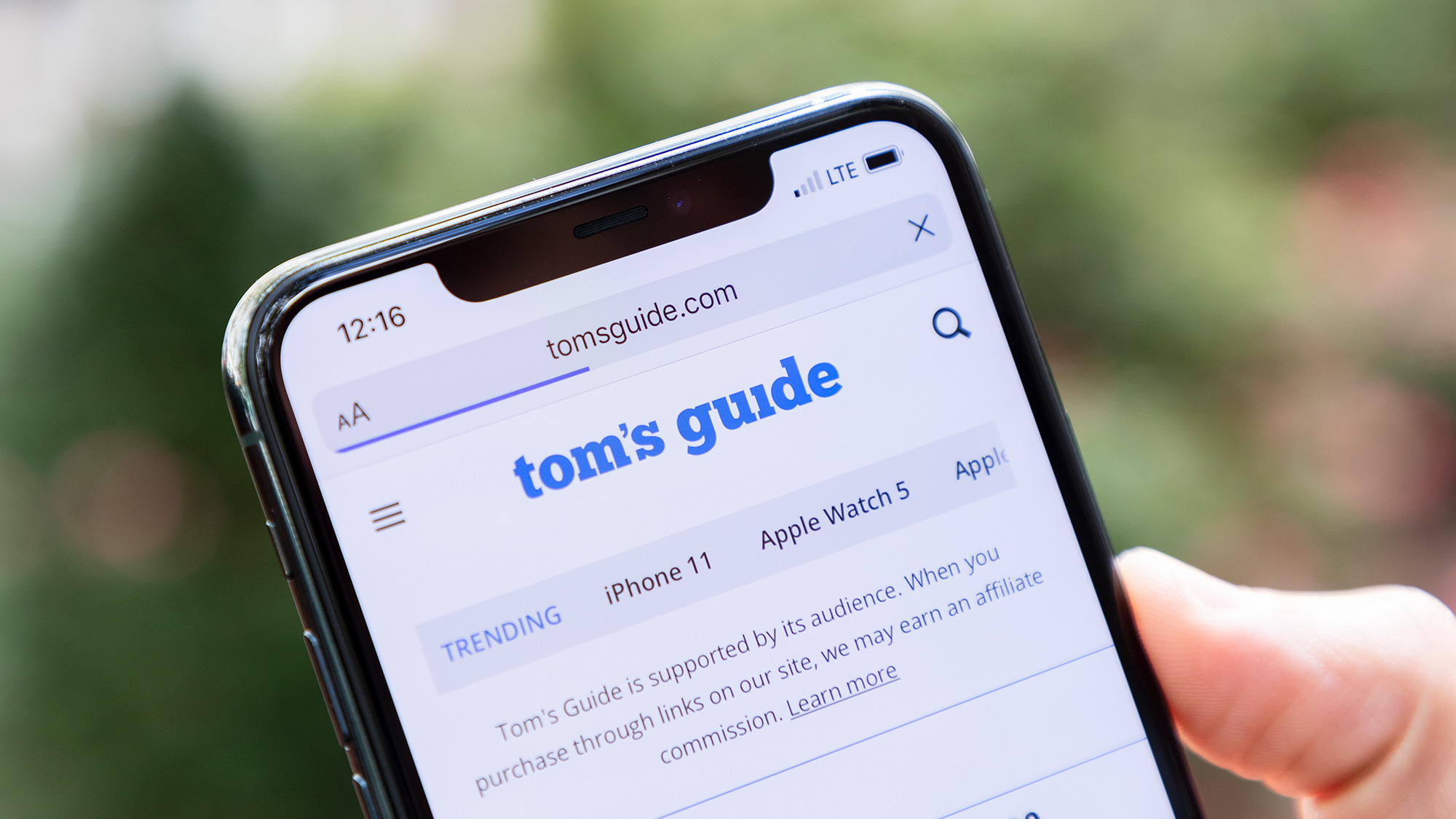
In the meantime, you'll have to make due with 4G LTE across the major carriers. The iPhone 11 Pro Max features the most advanced 4x4 MIMO antennas, compared with 2x2 antennas for the cheaper iPhone 11. On T-Mobile's network, we saw a notable delta in throughput, with the iPhone 11 Pro Max averaging 12.5 Mbps down and 3.5 Mbps up in central New Jersey, compared with 9 Mbps and 1.5 Mbps up for the iPhone 11.
Assuming you have a Wi-Fi 6 router, the iPhone 11 Pro Max should deliver faster Wi-Fi speeds when connected to those networks.
One wireless feature that will be available after launch on Sept. 30 is Ultra Wideband via Apple's new U1 chip. This technology can pinpoint the exact location of other iPhone 11 devices with a U1 chip inside, and there are rumors that Apple is working on a Tile-like object tracker powered by the U1. For now, the only application to benefit from the U1 chip is AirDrop; you can point your phone toward another U1-powered iPhone to share content over the air.
iPhone 11 Pro Max and iOS 14: New feature
For now, iPhone 11 devices ship with Apple's new iOS 13 software, and although Apple didn't make any groundbreaking changes to its mobile OS, there are several handy improvements.

Dark Mode makes reading content for longer stretches easier on the eyes, and there's a redesigned Reminders app that makes it easier to create and organize your various to-do lists. The large numbers next to various lists provide extra incentives to knock things off.
Other iOS 13 highlights include Sign in with Apple, which is designed to be a more private way to sign into various apps than Facebook or Google. And there's a rebuilt Maps app with street-level images via a new Look Around feature.
This fall iOS 14 will bring much bigger changes to the iPhone interface, including widgets on the home screen a tidier new App Library view, pinned conversations in messages and a Translate app. iOS 14 also brings a more compact design for Siri and spatial audio support for the AirPods Pro for more immersive sound.
iPhone 11 Pro Max vs. iPhone 11 Pro vs. iPhone 11
I recommend that you check out our iPhone 11 vs. iPhone 11 Pro vs. iPhone 11 Pro Max comparison for more details, but here's the gist if you're trying to figure out which new iPhone to buy.
At $699, the 6.1-inch iPhone 11 gives you the most bang for your buck, including great dual cameras and the same handy Night mode and fast A13 Bionic chip found on the pricier models.
The $999 iPhone 11 Pro is smaller than the iPhone 11 at 5.8 inches, making it a good choice for those who want to use a phone with one hand. And you get a third camera on the back for telephoto zoom and a richer OLED display, compared with the iPhone 11's LCD.
The reasons to step up to the $1,099 iPhone 11 Pro Max are its best-in-class battery life and ginormous 6.5-inch display.
iPhone 11 Pro Max verdict
The iPhone 11 Pro Max is the closest Apple has come to the perfect smartphone. The cameras truly are a leap forward and put the company ahead of both Samsung and Google — at least for now. And the bright OLED display outshines most other phones. The iPhone 11 Pro Max also sports the fastest phone processor you can get in its A13 chip and the longest battery life we've seen from any iPhone.
Although some may want to wait for Apple to roll out a 5G-capable iPhone 12 this fall, there are very few reasons to skip the iPhone 11 Pro Max if you want the best flagship phone now. My only big complaint is the 64GB of included storage (it should be at least double), and this phone is a bit heavier than its predecessor.
When you look at the phone landscape, there are plenty of great options, but right now the iPhone 11 Pro Max is the pinnacle of handsets.
Thinking of updating to the latest iPhone? Make sure you check out our Apple discount codes for the latest ways to save.
Mark Spoonauer is the global editor in chief of Tom's Guide and has covered technology for over 20 years. In addition to overseeing the direction of Tom's Guide, Mark specializes in covering all things mobile, having reviewed dozens of smartphones and other gadgets. He has spoken at key industry events and appears regularly on TV to discuss the latest trends, including Cheddar, Fox Business and other outlets. Mark was previously editor in chief of Laptop Mag, and his work has appeared in Wired, Popular Science and Inc. Follow him on Twitter at @mspoonauer.
